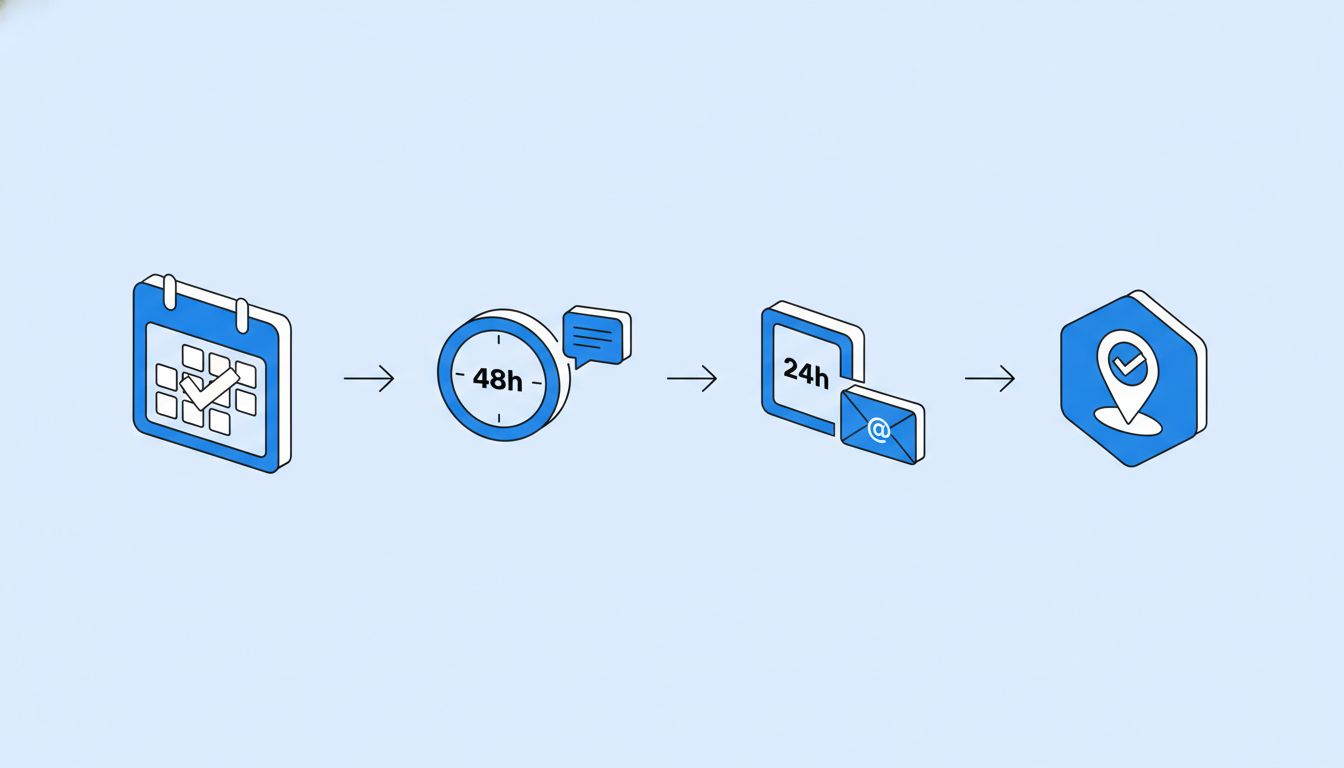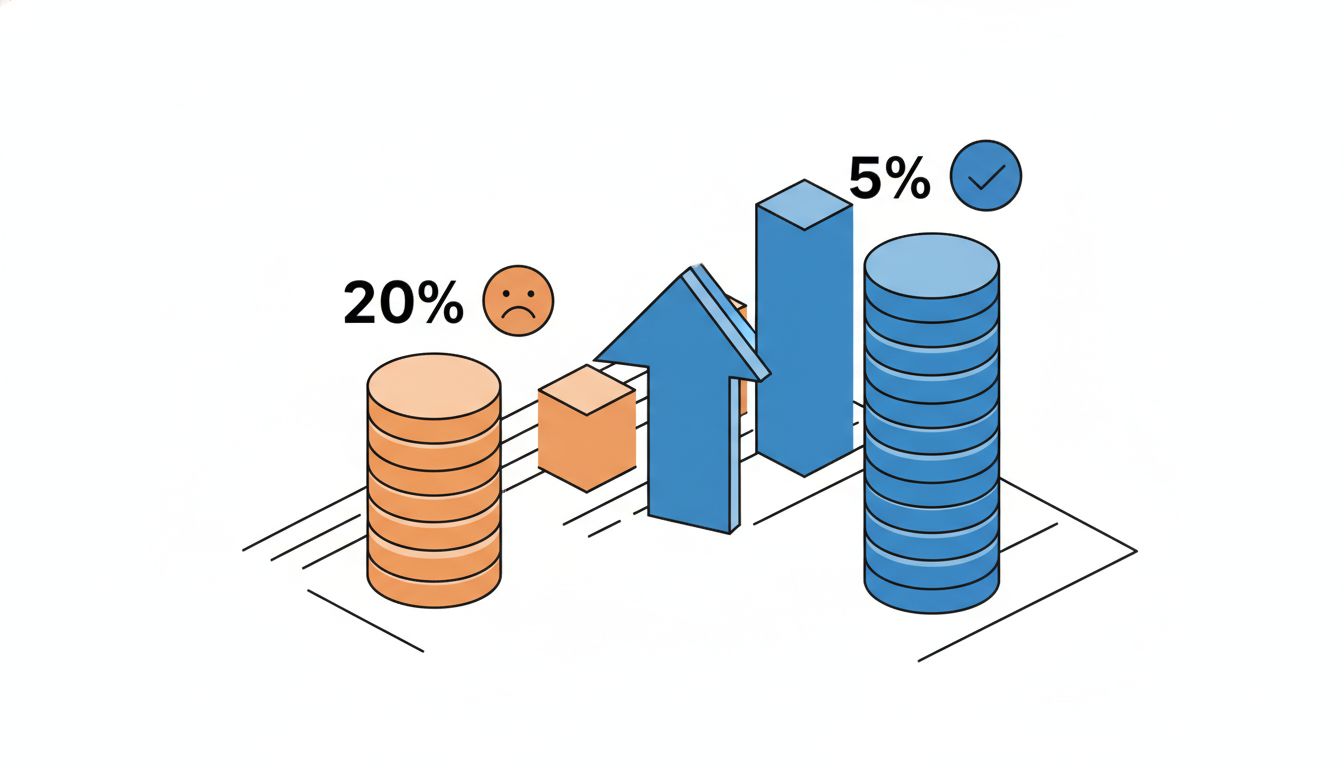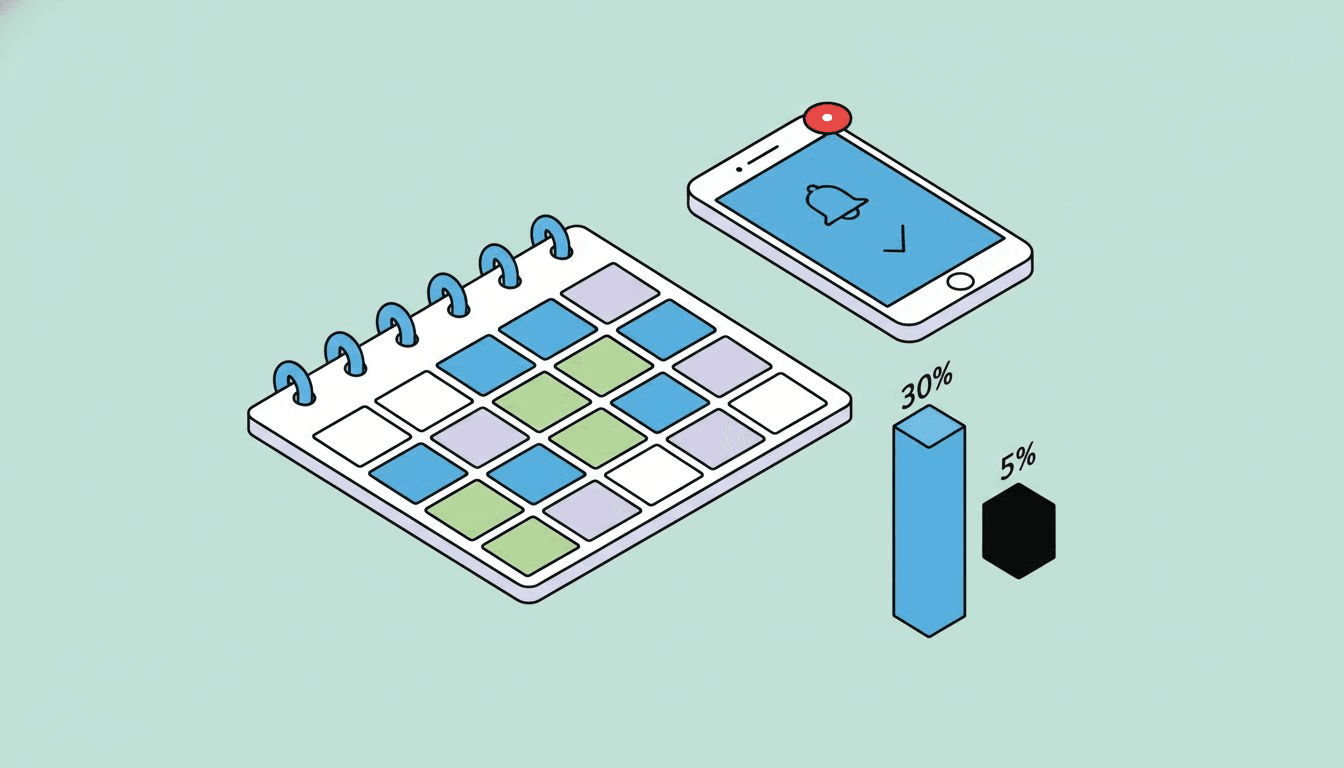Empty appointment slots represent one of the most persistent challenges facing salons and spas today. When a client fails to appear for a scheduled service, the business loses not just that appointment's revenue, but the opportunity to serve another paying customer in that time slot.
Industry research reveals that salons and spas face no-show rates averaging between 15-30%, translating to significant monthly revenue loss. A salon with 200 monthly appointments at an average service value of $85 can lose $2,550 to $5,100 every month simply from clients who don't appear. The financial impact compounds when considering that these empty slots could have been filled by clients on waitlists.
The root causes extend beyond simple forgetfulness. Clients book appointments weeks in advance without checking their calendars thoroughly, leading to scheduling conflicts. Traditional phone-based booking creates documentation gaps where clients don't retain appointment details. The beauty industry also experiences higher cancellation psychology - clients perceive beauty appointments as more flexible than medical or professional service appointments.
The Real Cost of No-Shows in Beauty Services
Understanding the complete financial impact requires looking beyond the immediate lost service revenue. Each no-show creates a cascade of missed opportunities and operational inefficiencies.
When a client misses an appointment, salons lose the base service revenue plus potential add-on treatments. A scheduled haircut might have led to color treatment or styling products, but the no-show eliminates these upsell possibilities. Staff members remain idle during that time slot while being paid, creating labor waste. Supplies prepared for the service (especially for chemical treatments requiring advance preparation) become wasted resources.
The calculation reveals the true cost. A mid-sized salon with 40 weekly appointments faces a 20% no-show rate, meaning 8 appointments weekly result in zero revenue. At an average service value of $85, this equals $680 in lost weekly revenue. Multiplied across a year, the salon loses $35,360 annually - enough to hire an additional part-time stylist or invest in facility upgrades.
Nail salons experience slightly different dynamics but similar financial pain. Industry benchmarks show nail salons maintain lower no-show rates (around 1%) but face higher cancellation rates of approximately 16%. The combination still creates schedule disruption and revenue gaps that compound over months.
Why No-Shows Happen
Most salons assume clients simply forget their appointments, but research into client behavior patterns reveals more complex underlying causes.
The booking-to-appointment gap creates the primary vulnerability. Clients frequently book services 2-6 weeks in advance during phone conversations or quick online bookings. Without written confirmation in a format they regularly check, the appointment fades from memory. This explains why phone-based booking without follow-up communication creates higher no-show rates than online booking with automated confirmations.
Calendar conflicts emerge as another major factor. During the initial booking conversation, clients don't always have their full calendar visible. They accept the time slot based on general availability, only to discover later they have work meetings, family commitments, or other conflicts. By the time they realize the conflict, they've either forgotten to cancel or feel uncomfortable calling.
Psychological commitment level plays a surprising role. Research shows that appointments made far in advance carry less psychological weight than those made within a week. The longer the advance booking period, the higher the no-show risk. Additionally, beauty services suffer from being perceived as "discretionary" - clients rationalize that missing a haircut or facial isn't urgent compared to missing a medical appointment or work commitment.
Economic factors influence behavior patterns as well. During periods of financial stress, clients may avoid canceling appointments out of embarrassment or guilt, choosing instead to simply not appear. This explains why no-show rates often increase during economic downturns or at certain times of the month.
Automated Reminder Systems

The most effective intervention for reducing no-shows involves implementing multi-touchpoint automated reminder systems. A Cochrane systematic review analyzing eight randomized controlled trials found that text message reminders improved appointment attendance rates by 14%, with patients receiving SMS reminders being significantly more likely to attend appointments compared to those receiving no reminders.
Automated reminders work through systematic repetition and multiple communication channels. When a client books an appointment, the system immediately sends a confirmation via their preferred channel - typically email or SMS. This initial confirmation serves as written documentation that the client can reference later.
The reminder sequence then triggers at strategic intervals. A first reminder typically sends 48-72 hours before the appointment, giving clients time to reschedule if conflicts exist. A second reminder 24 hours prior serves as a final prompt and often includes a simple confirmation button allowing clients to acknowledge their attendance. Research from Kaiser Permanente found that sending an additional text message reminder to high-risk appointments reduced no-show rates by 7% for primary care visits and 11% for mental health visits. Some systems add a third reminder 2-4 hours before the appointment for same-day awareness.
Medical spas and aesthetic clinics face particularly acute no-show challenges, with combined no-show and cancellation rates reaching 21% according to recent industry analysis. For these higher-investment services, automated reminder systems become even more critical. The data shows that spas implementing automated scheduling experience 25% fewer no-shows compared to manual reminder processes.
The communication timing aligns with cancellation policies. Salons typically require 24-hour cancellation notice, making the 48-hour reminder strategically valuable. This gives clients adequate time to cancel or reschedule while still allowing the salon to fill the slot from a waitlist.
Message content matters significantly. Effective reminder messages include the appointment date and time, the specific service booked, the stylist or technician name, and clear cancellation or rescheduling instructions. Research published in PLOS ONE found that the specific wording of reminders affects their effectiveness, with messages emphasizing appointment value reducing no-show rates from 11.1% to 8.4%. Personalization increases engagement - using the client's name and referencing their specific service creates higher response rates than generic templates.
Waitlist Management Integration
Automated reminders produce maximum value when integrated with intelligent waitlist management systems. When a client cancels with adequate notice, the waitlist immediately activates to fill the vacant slot.
Traditional waitlist management involves staff manually calling clients on a list, often during busy periods when they lack time for multiple phone calls. This creates a gap where cancellations result in empty appointments simply because staff couldn't reach waitlist clients quickly enough.
Automated waitlist systems solve this operational bottleneck. When a cancellation occurs, the system immediately notifies waitlist clients via SMS or email, offering the available slot. The first client to confirm receives the appointment, and the system automatically updates all relevant schedules.
Last-minute cancellation rebooking becomes particularly valuable for premium services. A cancellation for a highlights appointment worth $200+ represents significant revenue risk. Waitlist automation ensures these high-value slots get filled even with short notice.
The system tracks client preferences to optimize matching. If a client cancels a Tuesday morning appointment for a specific service, the waitlist system first contacts clients who previously expressed interest in Tuesday mornings for that service type. This targeted approach increases acceptance rates compared to broadcasting availability to the entire waitlist.
Salons report that waitlist automation recovers 60-70% of last-minute cancellations that would otherwise remain empty. For a salon with 8 weekly cancellations, recovering even 5 of those appointments adds substantial monthly revenue.
Technology Solutions Overview
Modern salon management systems integrate appointment booking, automated reminders, and waitlist management into unified platforms. The technology landscape offers options ranging from simple scheduling tools to comprehensive business management systems.
Basic scheduling platforms handle appointment booking and automated reminders as their core functions. These typically cost $25-75 monthly and serve small salons with straightforward needs. They send SMS and email reminders at predetermined intervals and provide online booking widgets for salon websites.
Comprehensive salon management systems add point-of-sale integration, inventory tracking, client history, and staff management alongside scheduling features. These platforms typically range from $100-300 monthly depending on features and staff count. The integrated approach eliminates data silos between booking and payment systems.
AI-powered phone answering services represent an emerging category addressing a different aspect of the booking challenge. These systems handle inbound booking calls 24/7, capturing appointments when salons are closed or staff are busy with clients. According to recent research on after-hours call handling, 24/7 availability dramatically improves appointment capture rates. These services typically cost $99-500 monthly and integrate with existing scheduling platforms.
The integration architecture matters significantly. Systems that connect with existing calendars (Google Calendar, Microsoft Outlook) reduce duplicate data entry and simplify staff adoption. CRM integration ensures client contact information stays synchronized across systems.
Mobile accessibility has become table stakes. Staff need the ability to check schedules, move appointments, and view client notes from their phones between services. Clients expect to book and manage appointments from mobile devices - industry research shows approximately 70% of salon customers have skipped booking because the process was too difficult or they couldn't reach someone by phone. Healthcare research indicates that the majority of patients prefer providers offering online scheduling capability. This represents a massive opportunity loss that modern salon scheduling software can prevent.
Implementation Approach
Successful technology implementation requires planning beyond simply signing up for a platform. Salons that achieve maximum no-show reduction follow systematic implementation approaches.
The assessment phase involves documenting current booking processes, identifying friction points, and establishing baseline metrics. Salons should track current no-show rates, cancellation rates with notice, average lead time for bookings, and staff time spent on scheduling calls. These baselines enable measuring improvement post-implementation.
Platform selection should prioritize features that address specific pain points. A salon with high no-show rates needs robust reminder automation. A busy salon missing calls during peak times benefits from 24/7 automated booking. A multi-location operation requires central management with location-specific scheduling.
The migration process involves transferring existing client data, inputting current appointments, and training staff on the new system. Gradual rollout reduces disruption - many salons start by using new systems for online bookings while maintaining existing processes for phone bookings, then transition fully once staff gain confidence.
Client communication prevents confusion during transitions. Salons should inform regular clients about new booking processes, explain how to use online booking if newly available, and reassure them that phone booking remains an option during the adjustment period.
Configuration determines system effectiveness. Setting appropriate reminder timing, customizing message templates to match salon voice, and configuring cancellation policies within the system all impact results. Salons typically need 2-4 weeks of adjustment to optimize these settings based on client response patterns.
ROI Analysis

The financial justification for booking automation becomes clear through detailed ROI calculation. Consider a typical scenario for a medium-sized salon.
Current State:
- 200 monthly appointments
- 20% no-show rate (40 appointments)
- Average service value: $85
- Monthly no-show revenue loss: $3,400
- Staff time on booking calls: 15 hours monthly at $20/hour = $300
Post-Implementation State:
- Same 200 monthly appointments
- 5% no-show rate (10 appointments) after reminder automation
- Monthly no-show revenue loss: $850
- Recovered appointments: 30 (40 - 10)
- Recovered revenue: $2,550
- Reduced staff phone time: 10 hours saved monthly = $200
System Costs:
- Scheduling platform: $150/month
- Setup and training: $500 (one-time)
First Month Analysis:
- Recovered revenue: $2,550
- Labor savings: $200
- Total benefit: $2,750
- System cost: $650 (including setup)
- Net benefit: $2,100
Ongoing Monthly Analysis:
- Recovered revenue: $2,550
- Labor savings: $200
- Total benefit: $2,750
- System cost: $150
- Net benefit: $2,600
The system pays for itself immediately and generates $31,200 in annual net benefit. This calculation assumes conservative 75% reduction in no-shows (from 20% to 5%) - many salons achieve even better results.
For salons adding automated phone answering capabilities to capture after-hours bookings, additional revenue accrues from appointments that would never have been scheduled. Research shows that approximately 40% of appointments are booked outside traditional office hours, with most customers preferring providers offering online scheduling. This pattern extends across service industries, representing significant untapped booking opportunities. Learn more about pricing options for comprehensive solutions, or explore AI phone automation for beauty businesses to never miss a booking call again.
Measuring Success
Ongoing monitoring ensures the system delivers expected results and identifies opportunities for further improvement. Key metrics reveal performance across multiple dimensions.
Primary Metrics:
- No-show rate (target: 5% or lower)
- Cancellation with notice rate (tracking improvement in client responsibility)
- Waitlist conversion rate (percentage of cancellations successfully refilled)
- Online booking percentage (measuring client adoption)
Operational Metrics:
- Staff time on scheduling calls (should decrease)
- Average appointment booking lead time (longer is riskier for no-shows)
- Client retention rate (good systems improve retention through better communication)
- Revenue per available appointment slot
Client Experience Metrics:
- Online booking completion rate (measuring process friction)
- Response rate to reminders (measuring engagement)
- Cancellation notice time (longer notice enables better waitlist management)
Dashboard analytics in modern systems surface these metrics automatically. Monthly review sessions identify trends requiring intervention. For example, if a specific time slot (e.g., Monday mornings) shows persistently high no-shows, targeted strategies for that slot may be necessary.
Next Steps for Salon Owners
Reducing no-shows from 15-30% to 5% translates directly to recovered revenue and improved operational efficiency. The technology solutions exist at accessible price points, and implementation timelines measure in weeks rather than months.
Salons considering booking automation should begin with assessment - calculating the current cost of no-shows using the formula: monthly appointments × current no-show rate × average service value. This establishes the financial opportunity and justifies investment.
For salons receiving significant call volume or experiencing after-hours booking requests, exploring AI phone automation complements scheduling systems by ensuring no booking opportunity goes missed. The revenue calculator helps quantify potential returns from capturing missed opportunities.
The beauty industry's high no-show rates aren't inevitable. They represent a solvable problem with clear technology solutions and proven implementation approaches. Salons implementing comprehensive booking automation consistently achieve no-show rates of 5% or less while reducing staff time on scheduling administration.
For businesses experiencing high call volume alongside appointment no-shows, combining scheduling automation with 24/7 call handling solutions creates a comprehensive approach that captures every booking opportunity while maintaining schedule efficiency.
Start with one component - either automated reminders or online booking - and expand from there. The systems work together synergistically, but immediate progress comes from addressing the single biggest pain point first.
Frequently Asked Questions
What no-show rate should salons expect with automated reminders?
Industry data shows automated reminder systems reduce no-show rates from typical ranges of 15-30% down to approximately 5%. The exact rate varies based on factors including service type, client demographics, advance booking periods, and reminder message quality. Salons implementing multi-channel reminders (SMS plus email) achieve better results than single-channel approaches.
How much do salon scheduling systems typically cost?
Basic scheduling platforms with automated reminders range from $25-75 monthly. Comprehensive salon management systems including point-of-sale, inventory, and client management cost $100-300 monthly. Implementation and setup may add one-time costs of $200-1,000 depending on data migration complexity and training needs.
Can automated systems handle complex scheduling scenarios?
Modern scheduling platforms manage complex scenarios including multiple service providers with individual calendars, services requiring specific time blocks or equipment, back-to-back booking restrictions, and buffer time between appointments. Advanced systems allow setting provider-specific working hours, blocking personal time, and managing multi-location scheduling from central dashboards.
Do clients respond better to SMS or email reminders?
Research shows SMS reminders achieve significantly higher read rates (98% versus 20% for email) but demographic preferences vary. Younger clients overwhelmingly prefer SMS, while some older clients engage better with email. Optimal systems send both and track individual client response patterns to optimize future communications. The 24-hour reminder works best via SMS for immediacy, while the 48-hour reminder can use email.
How do waitlist systems handle client preferences?
Advanced waitlist management tracks client preferences including preferred days, time windows, specific service providers, and service types of interest. When cancellations occur, the system matches availability against these preferences before sending notifications. Clients indicate waitlist interest either during booking attempts for unavailable slots or through profile preferences indicating general interest in earlier appointments.
What happens when staff schedules change unexpectedly?
Quality scheduling systems allow quick staff substitution with automatic client notification. When a stylist calls in sick, the manager can either reassign clients to available staff or offer rescheduling. The system sends automated notifications explaining the change and offering alternatives. This prevents clients from arriving to find their scheduled provider unavailable - a major satisfaction issue that traditional paper systems handle poorly.


